Reality Check
What to Do:
-
Use the Goals, Roles, and Procedures Pyramid and associated explanation (Tool 9-1) to identify the possible root cause of the team’s problems.
Using the Goals, Roles, and Procedures Pyramid to Identify the Cause of Project Team Problems
Tool 9-1.

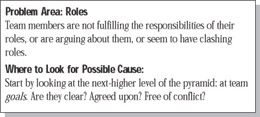
-
If you need to pinpoint the problem more specifically, have the entire project team take the Project Team Effectiveness Survey. Look at individual scores and collective team scores to identify the areas you need to address. (See Tools 9-2 and 9-3.)
Project Team Effectiveness Survey
Tool 9-2.
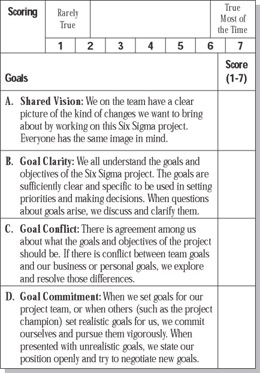
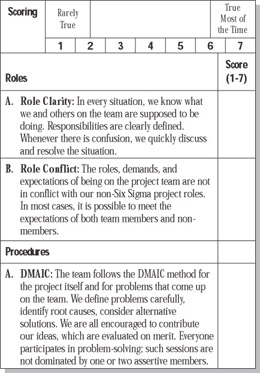
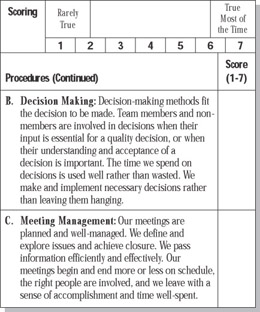
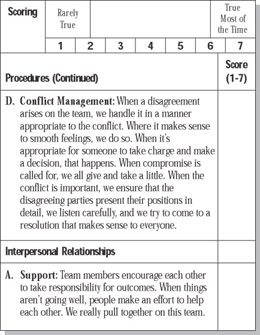
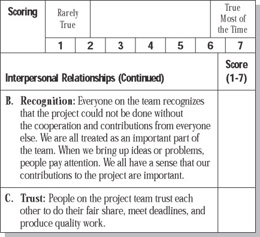
Survey Scoring Grid
Tool 9-3.
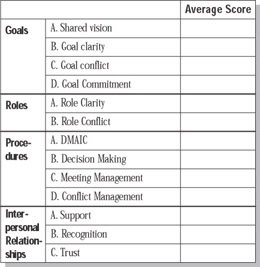
-
Follow the guidelines in Tool 9-4 for dealing with the underlying causes of the problems.
Guidelines: Dealing with Project Team Problems
Tool 9-4.
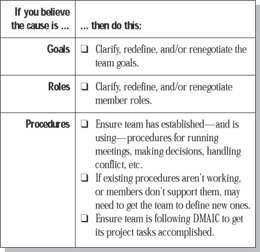
-
Look at the checklist in Tool 9-5 to ensure that you’re not worrying needlessly.
Checklist: Avoiding Needless Worry About Project Team Problems
Tool 9-5.
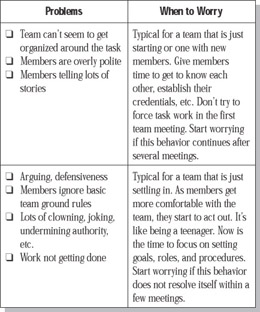
-
Where possible, do this analysis and discussion as a team.
Goals, Roles, and Procedures Pyramid

| Note | You should look up one level in the pyramid to identify the root cause of a problem you’re seeing at another level. For example, if you’re having problems getting the team to follow procedures, the cause might be associated with unclear or conflicting roles. |
Scoring the Survey:
-
For each element of team effectiveness (such as Goals), add together all team members’ scores and divide by the number of team members to get an average score (1-7). Enter this information into the scoring grid in Tool 9-3.
-
Look at the variation in scores: do some team members score an item at the high end of the scale, while others score it at the low?
-
Select items for attention as directed page 72.
-
Refer to the guidelines in Tool 9-4 (page 73) for what to do.
Where to Focus Your Attention
Look immediately at:
-
Areas with average score = 1-3
-
Areas with wide variation in team member scores
Consider next:
-
Areas with average score = 4-5
Address last or not at all:
-
Areas with average score = 6 or above
Note that it’s less important to look at the total survey score than it is to look at scores for the individual areas ... both the absolute scores and the variation among team member perceptions. It is at this level that you can get at the real underlying issues—and take action that will really help.
EAN: 2147483647
Pages: 65